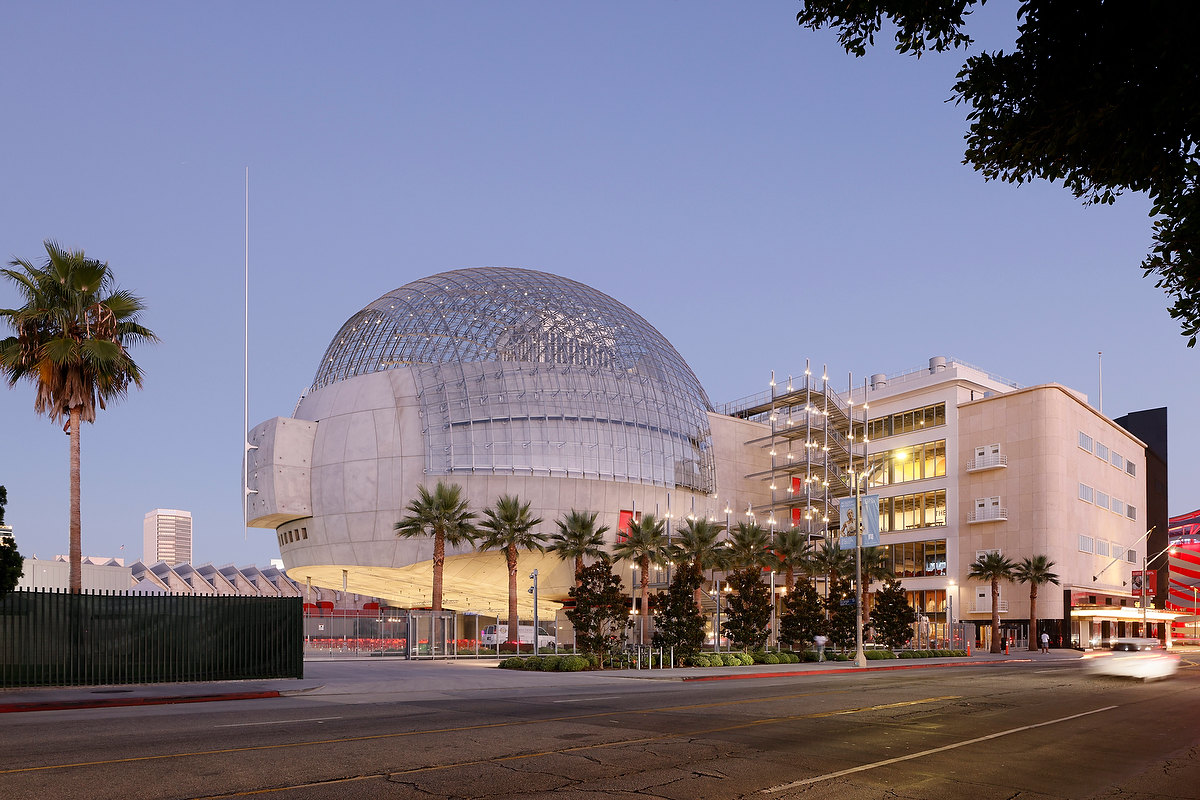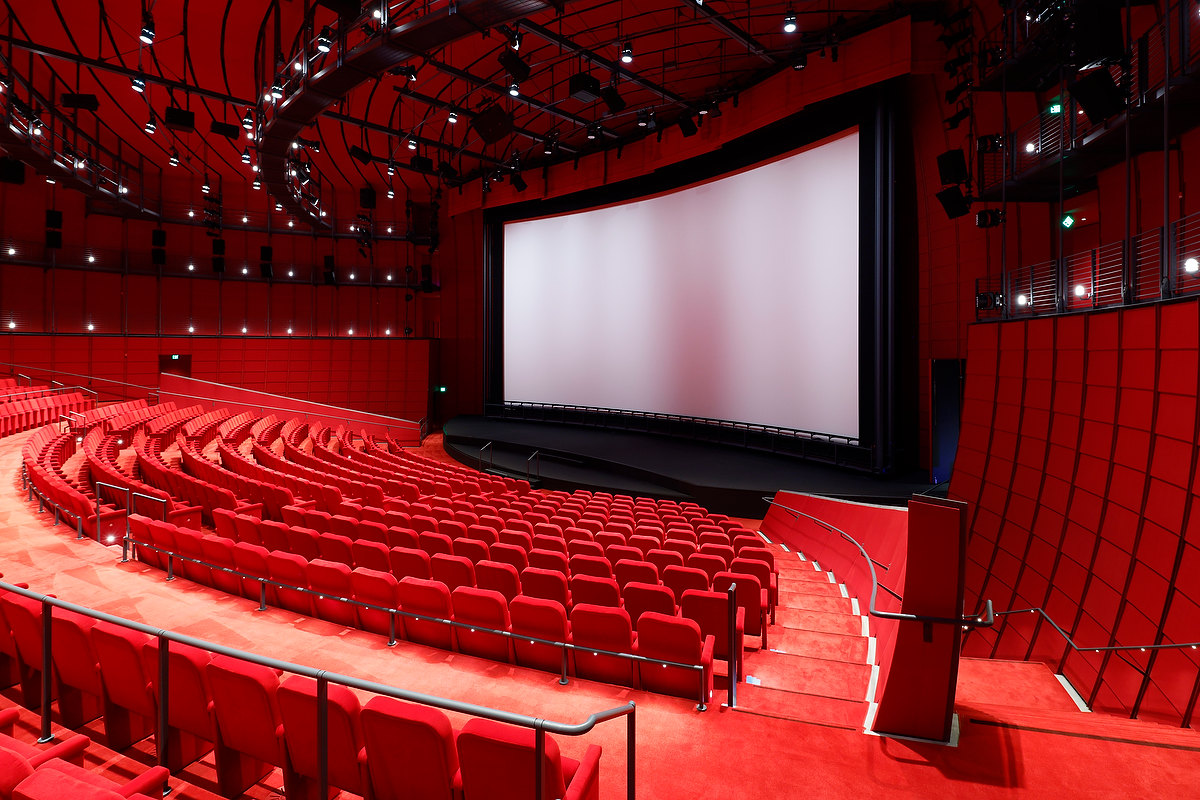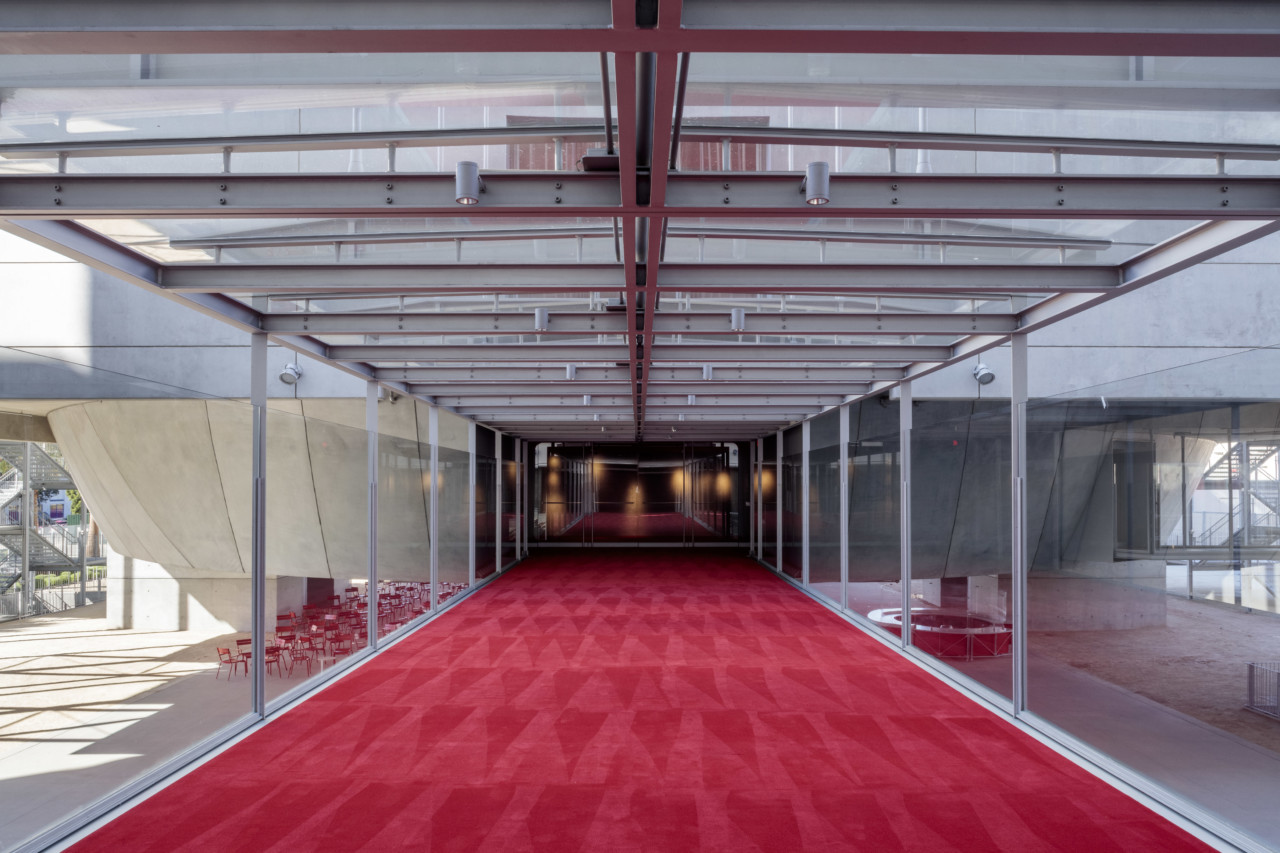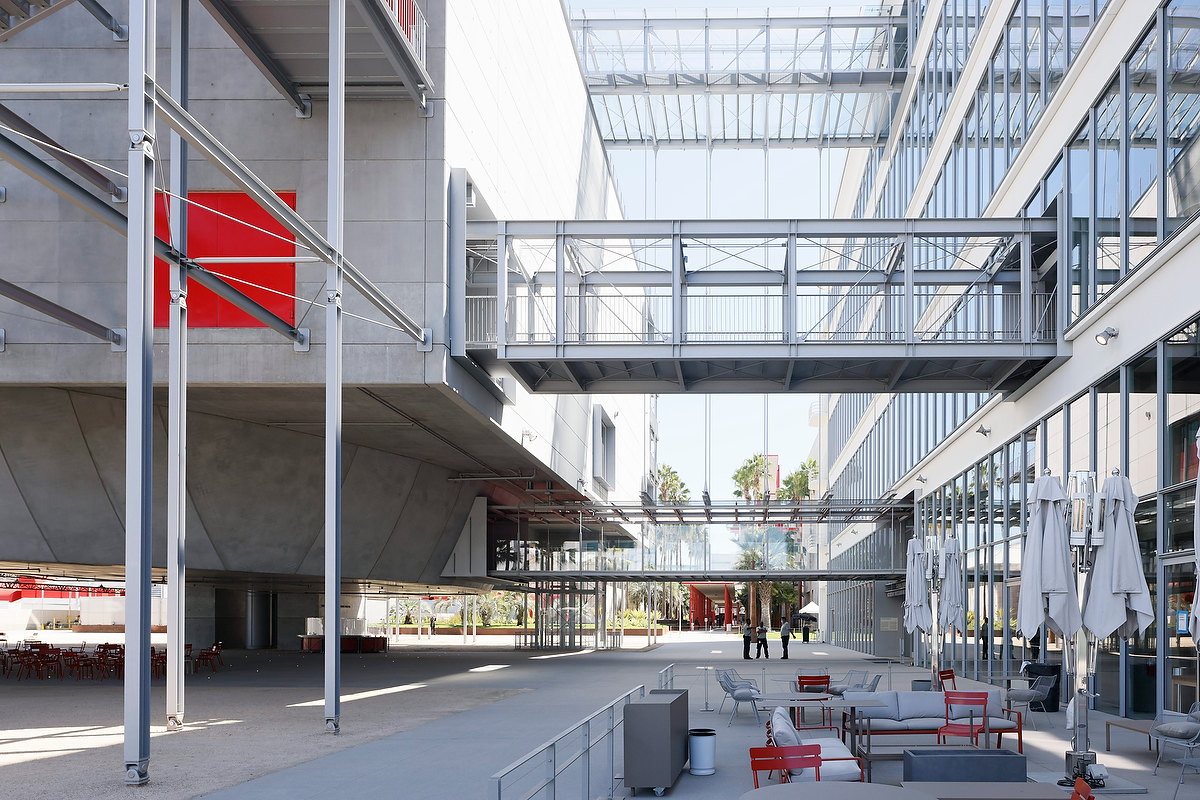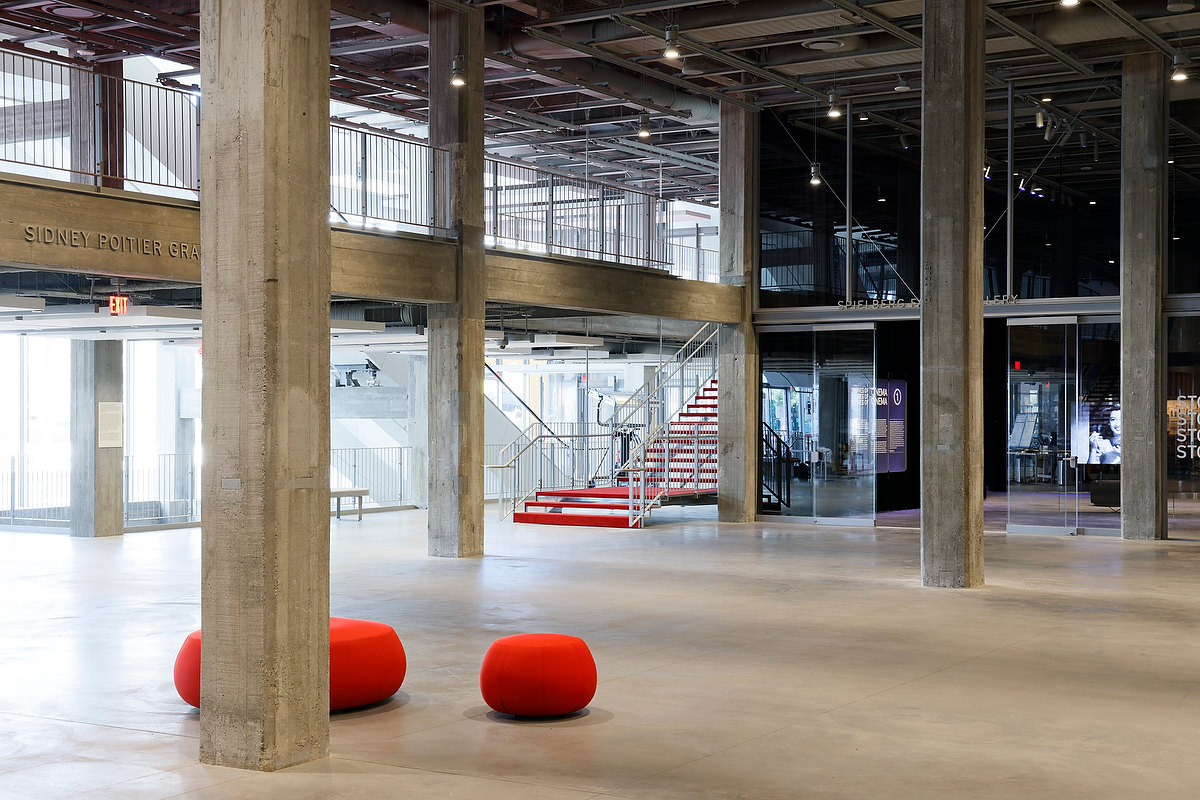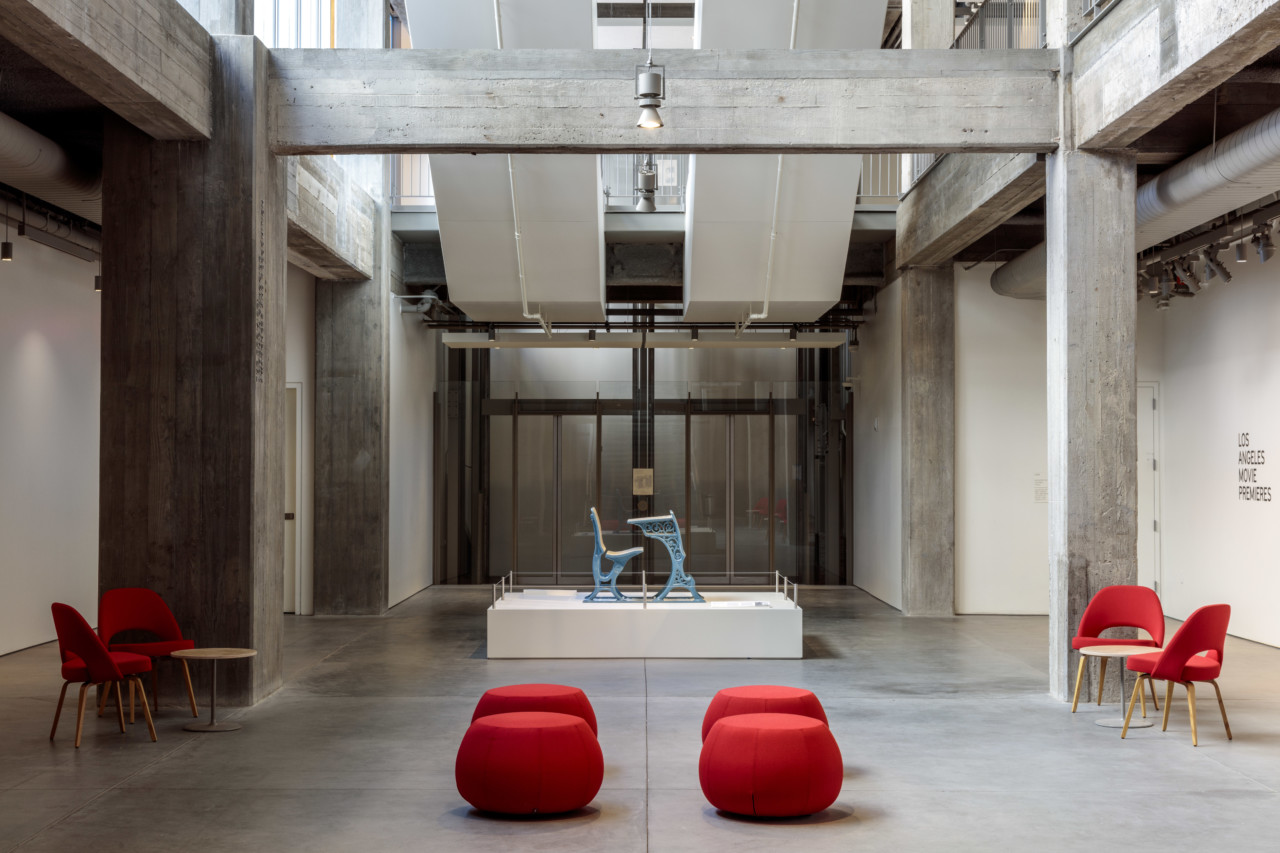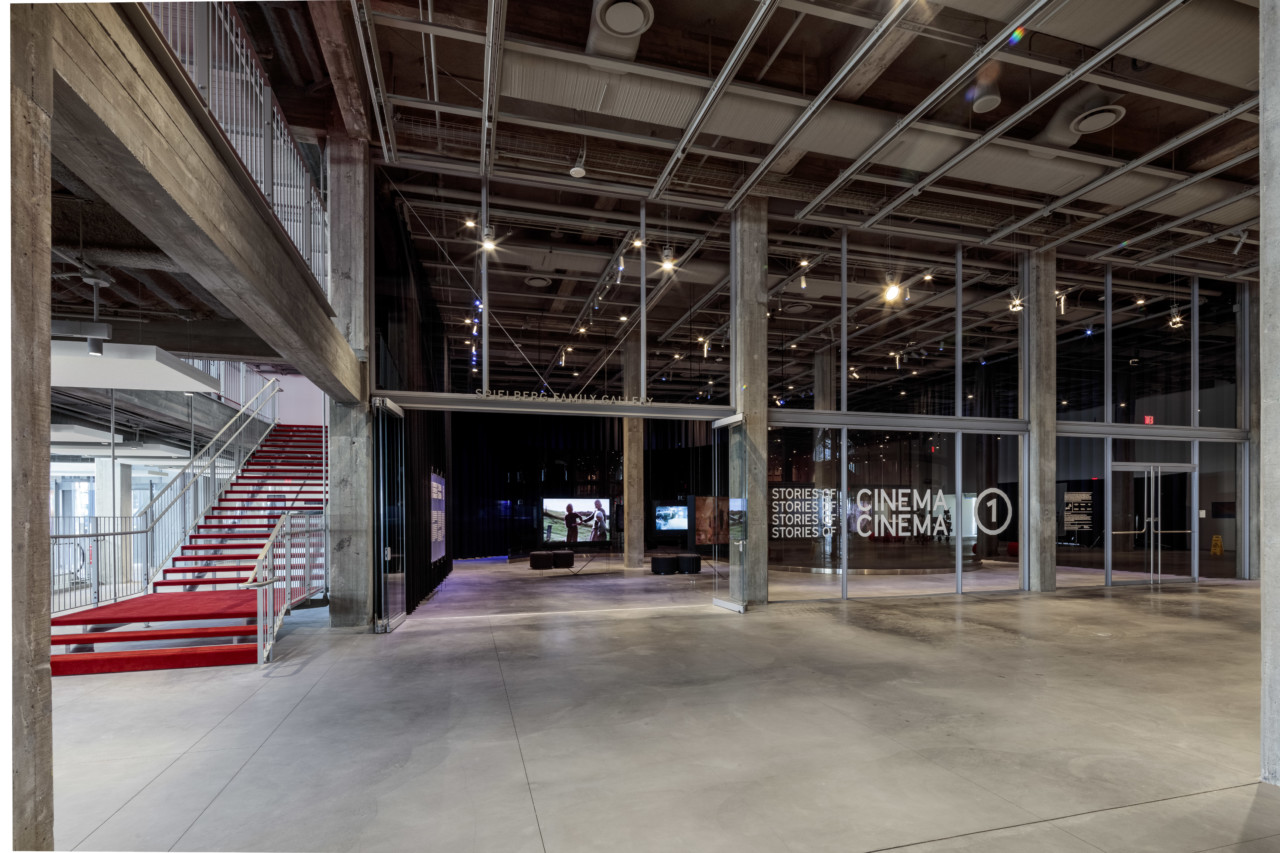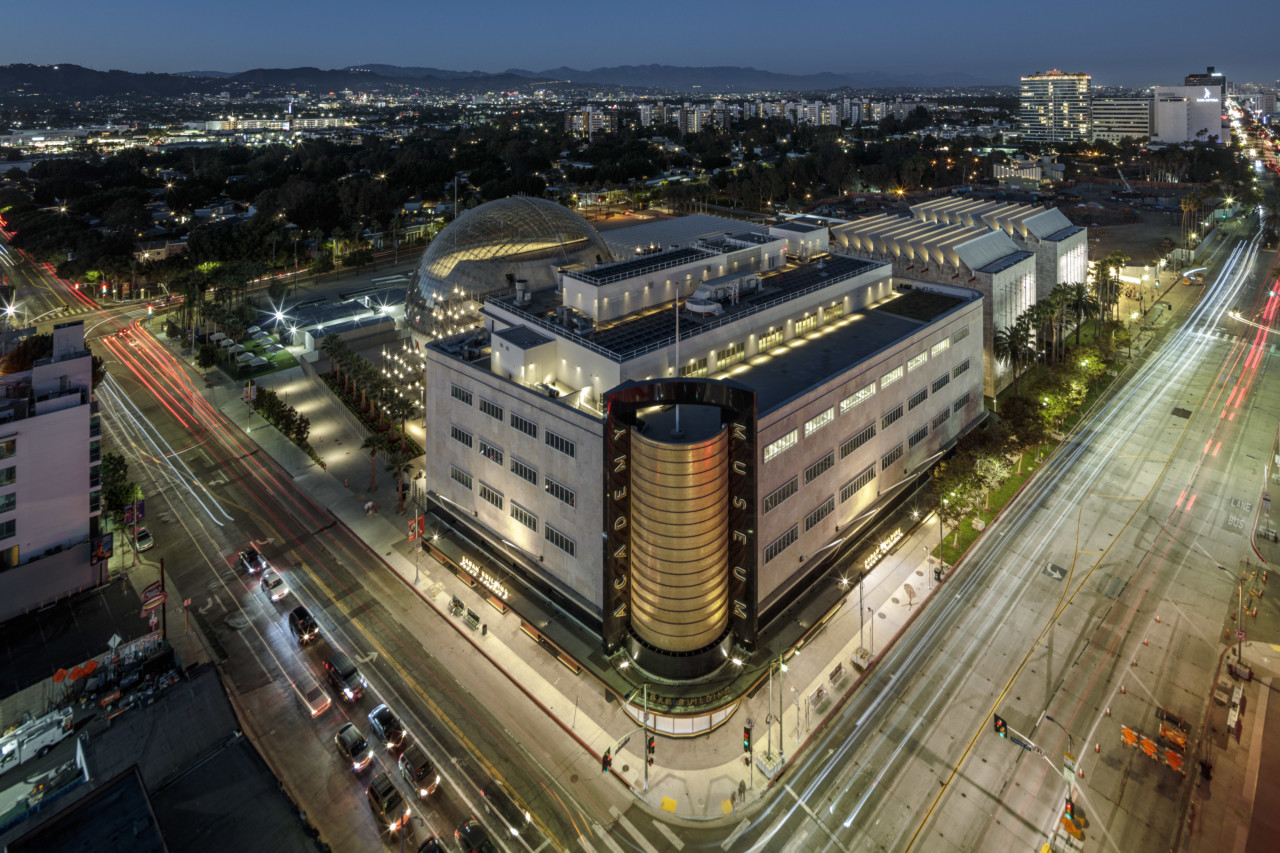Genoese architect Renzo Piano would prefer it if you didn’t call the imperial sphere that his firm, Renzo Piano Building Workshop (RPBW), realized for the Academy Museum of Motion Pictures “the Death Star.” Indeed, the Star Wars reference is too on-the-nose for a bulbous structure meant to celebrate Hollywood history. Too self-referential even for an industry that loves a reboot. As if the architecture itself might break the fourth wall and mug for the camera, begging to be blown to smithereens in next year’s biggest blockbuster.
“Call it a dirigible, a zeppelin,” Renzo Piano said correctively to the press ensconced in the plush, red-carpet red, 1,000-seat Geffen Theater, snug in the belly of the monumental vessel (surround sound courtesy of Dolby). Better yet to refer to the 26-million-pound precast concrete, steel, and glass addition to the landmarked May Company building as he does: “a soap bubble.”
Technically, the Academy Museum encompasses the 45,000-square-foot sphere and the 250,000-square-foot former department store, delicately connected by two 16-foot-wide steel-and-glass pedestrian bridges. In practice, its footprint nestles into LACMA’s campus, which is home to two earlier, wholly rectangular RPBW buildings.
Constructed in collaboration with executive architect Gensler and structural engineers Buro Happold, the inexplicable bubble is some 150 feet in diameter and “floats” at least 10 feet above the so-called Walt Disney Company Piazza on eight mammoth base isolators, to stave off earthquake catastrophe. Up top, 1,500 laminated glass panels crown the dome in a toupee of tectonic artistry. True to Tinseltown hierarchies, that uppermost level, which promised a panorama of the Los Angeles basin and the Hollywood sign, was closed to the media as staff set up the opening gala.
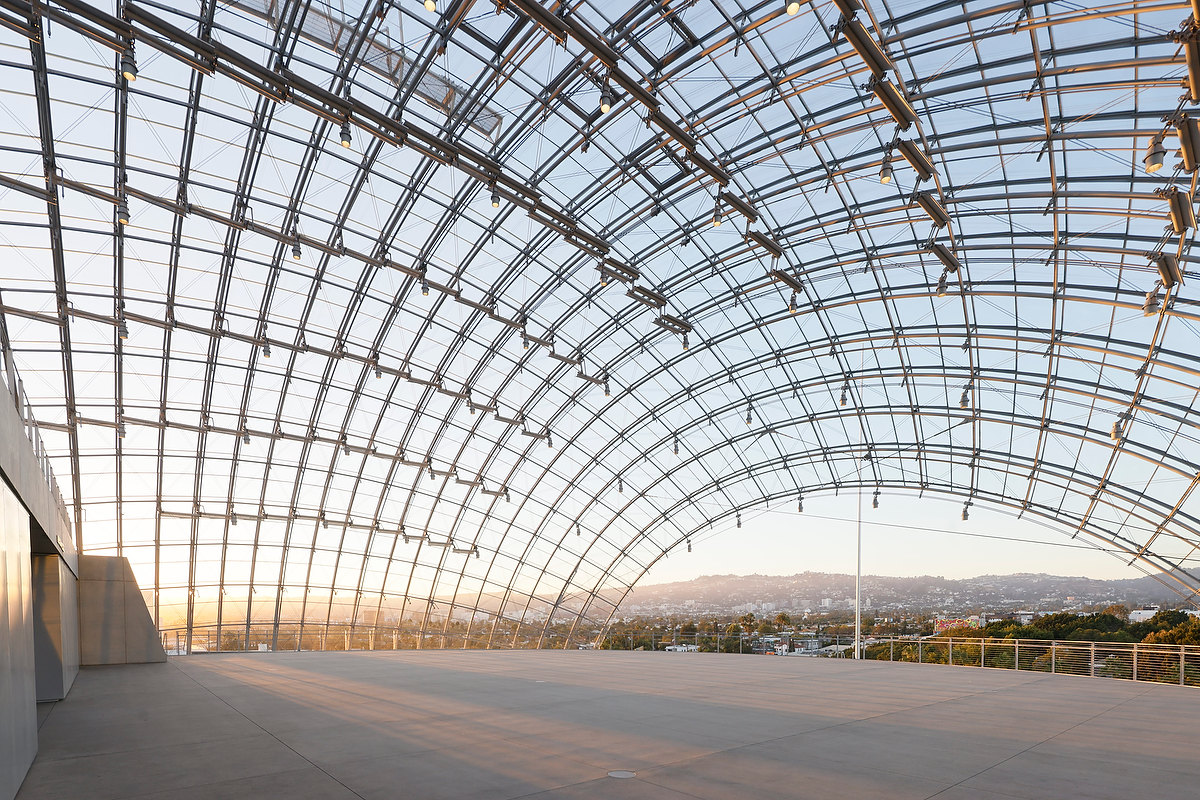
Piano’s concept for the sphere has less to do with physical lightness and more with the whimsical idea that going to the movies is a transposition from one world to another—a kind of universal act of fantasy preached by the industry. And while a collective hush fell over the Geffen Theater as the lights dimmed and the curtain lifted, there’s no denying that things have changed.
Actor, museum trustee, and COVID survivor Tom Hanks also spoke at the press event. He recalled his childhood in Oakland, whose domed Century 21 theater had been a landmark. Rather than offering up a whiff of cute nostalgia, the memory of a long-demolished bubble was a reminder of the uncertain fate of the Cinerama Dome on Sunset Boulevard, which shuttered during lockdown with no plans to reopen. Incidents, ideologies, and cultural shifts over the past few years—social uprisings, pandemic politics, “Netflix and chill”—have dissolved any illusion that one bubble can unite everyone.
Hollywood and the Academy were rocked by movements like #metoo and #oscarstoowhite that demanded structural changes to the white, male power structures that have governed the last 100 years of movie history. Jacqueline Stewart, a scholar of African American cinema who was named the Academy Museum’s chief artistic and programming officer in fall 2020, stressed at the press event that the institution strives for inclusion over universal. To a degree, RPBW’s approach to the 1939 May Company building (now called the Saban Building) fares better under such reframing. Galleries are flexible and raw—ready for a projected 4 million visitors per year.
The Streamline Moderne facade was meticulously restored to its original condition. The stylized gold cylinder that marks the corner of Wilshire and Fairfax once again gleams as bright as an Oscar. However, the interior was stripped of all ornament and old casework. If the art of filmmaking is about cultivating a suspension of disbelief, then the exposed columns and polished concrete of the double-height Sidney Poitier Grand Lobby and concourses on each of the five floors adhere to vérité.
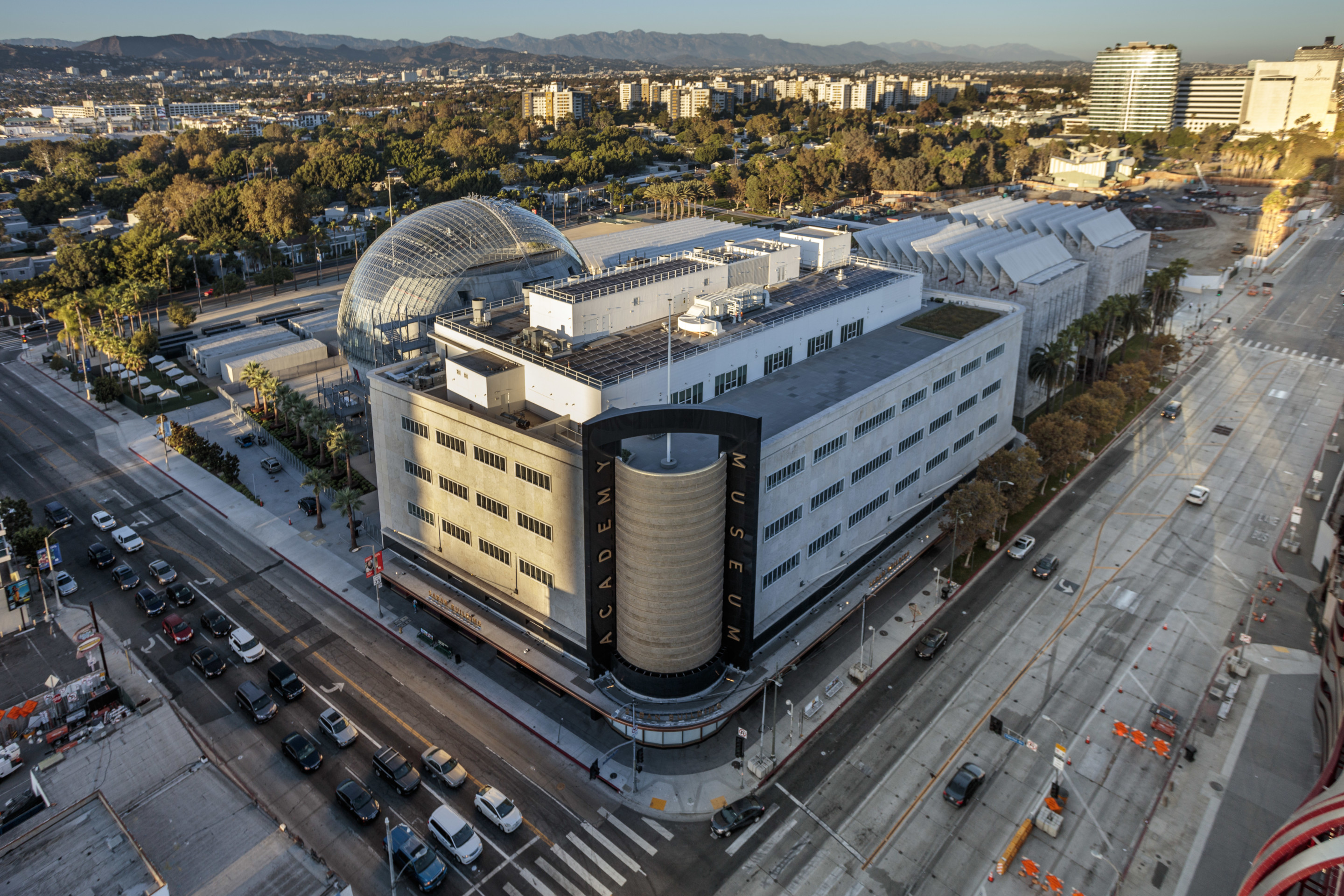
RPBW asserts that clearing out the department store kitsch preserves the integrity of the original structure, but it may be a matter of taste. The stripped-down results are very European kunsthalle chic. Or, an elevated riff on the bare-bones studio soundstage (a timely tribute to entertainment laborers as the International Alliance of Theatrical Stage Employees union is on the verge of a strike). Walking into the cavernous main lobby, with its polished concrete floors and oversized red poufs, leaves a visitor perplexed. Minus the red carpet that leads up the stairs to the mezzanine and to the theater, there’s little glitz.
Glamour is replaced with Piano’s trademark detailing. Lighting grids, fire sprinkler piping, handrails, window mullions, escalators, are centered and aligned with intense precision. This kind of meticulous coordination requires time. And money. It’s an expression of the dealmakers with expense accounts behind the scenes, not the celebrities in front of the cameras.
RPBW makes a hard and clear distinction between circulation and display spaces. Escalators drop visitors off at empty landings on each floor, facing a wall of hard choices. Nearly every gallery requires that you open a door and cross a threshold. This is in part practical: to mitigate light and sound spill from the many screens on view, and it is a demarcation of church and state—not between front and back of house, but between capital-A architecture and stagecraft.
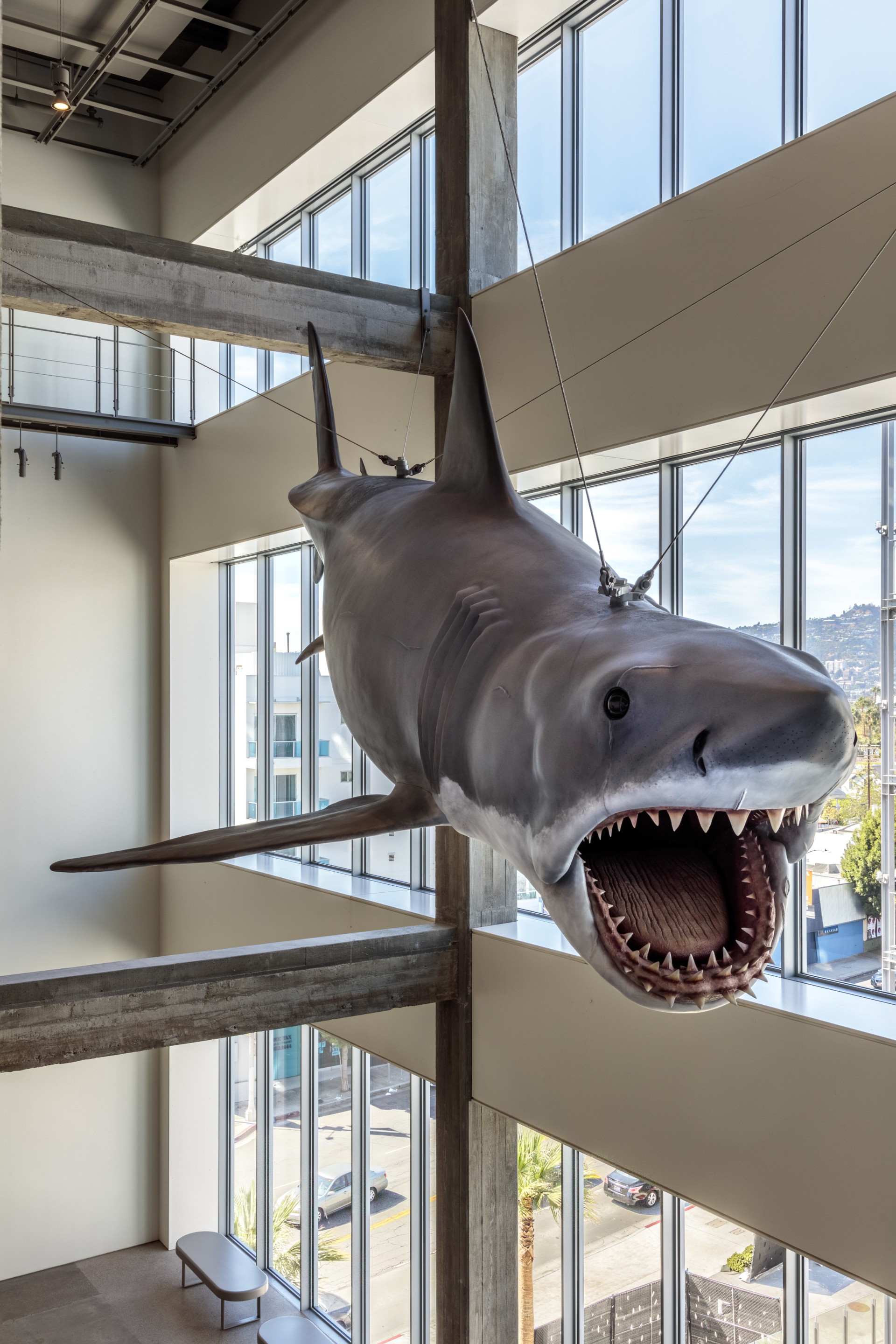
“You can’t make magic out of magic,” noted exhibition designer Kulapat Yantrasast of WHY Architecture. He and Brian Butterfield, working closely with Academy representatives and more than a dozen curators, wrangled the Academy’s extensive array of film artifacts and memorabilia—from Dorothy’s ruby slippers to Barry Jenkins’s Oscar for Moonlight—into immersive experiences rich with diverse narratives. In contrast to Piano’s luxurious austerity, the galleries are visual explorations of color and image.
The museum’s core presentation, Stories of Cinema, stretches over three floors and features old and new Hollywood objects, like the Rosebud sled from Citizen Kane, but also dives into the work of filmmaker and producer Oscar Micheaux, who founded the first Black-owned studio, Lincoln Motion Picture Company, in 1916. The exhibition concludes in an otherworldly saturated blue gallery full of large screens playing clips of Pedro Almodóvar’s most iconic films.
Fans will certainly rush upstairs to see a gleaming C-3PO, yet to navigate more slowly through the displays is to go from one possible imaginary to another. For example, a room developed with director Spike Lee is an explosion of his influences set against orange walls (plus the purple tux he wore to the Oscars to tribute Kobe Bryant). The Academy Museum experience is a strange trip that veers between high and low, popular and precious. To suggest that there might be a universal message, an all-encompassing design, a bubble that unites this wealth of material other than the medium of film (and even that has fragmented into different markets, technologies, and platforms) is ill-advised.
To crib a bit from German philosopher Peter Sloterdijk: contemporary society is defined by a plurality of soap bubbles loosely networked together—a foam, not an orb. When Piano introduced his far-out sphere in 2012, it seemed like it would take a minute for us to catch up with the audacity of his architectural design. In the near-decade since, a foamy culture has overtaken the gesture, rendering it an anachronistic relic of another future.
Mimi Zeiger is a Los Angeles–based journalist, critic, and curator.






